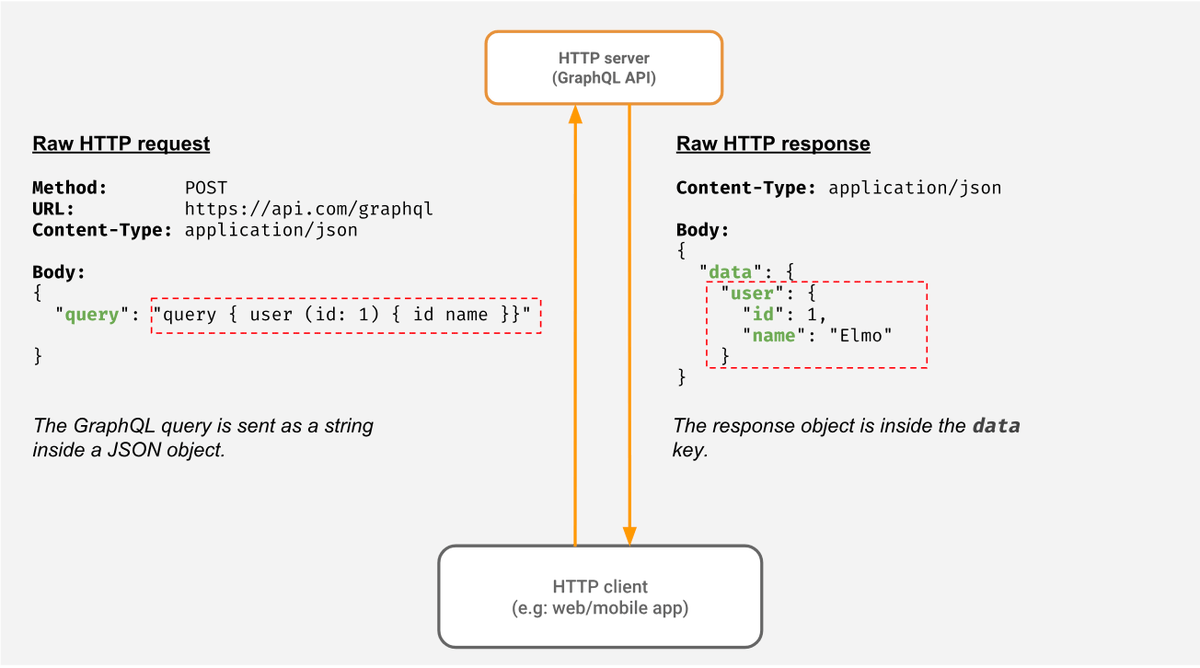GraphQL API in a nutshell.
 Ian Carson
Ian Carson- What is GraphQL API.
GraphQL was initially developed by Facebook in 2012 and later on Open sourced in 2015. It is a query language for API and a runtime for executing the Queries by using a type system defined for the data.
Key aspects of the GraphQL include.
- Declarative Data fetching.
This means that clients can request the exact data that they need and nothing more. This is among GraphQL's pillar functionalities. It prevents over-fetching or under-fetching of data, improving efficiency.
- Single EndPoint.
Unlike REST, which may require multiple endpoints for different resources, GraphQL uses a single endpoint for all queries and mutations.
- Strongly Typed.
GraphQL API's have a strong type system defined using a schema. The schema serves as a contract between the client and the server, ensuring consistency.
- Real-time data.
Graphql can be used for real-time applications by utilizing subscriptions. Subscriptions allow clients to receive updates when the underlying data changes.
- GraphQL Schema.
At it's core, GraphQL has a schema. This defines the types of data that can be queried and the operations that can be performed.
A GraphQL Schema consists of:
- Types.
These represent the data structures in the API, like User, Product, or Post.
- Queries.
These are entry points for fetching data.Clients use queries to request specific data from the server.
- Mutations.
Entry points for modifying data. Clients use mutations to create, update, delete data.
- Subscriptions.
These are used for real-time updates. Clients can subscribe to changes in the data.
- GraphQL servers.
To implement GraphQL API, one needs a server that understands GraphQL queries, resolves them, and returns the requested data.
Popular options for building GraphQL servers include:
a. Apollo Servers.
A widely used GraphQL server library for Node.Js.
b. Express-GraphQL.
This is the middleware for adding GraphQL to Express.js applications.
c. Graphene-Django.
This is the Python Library for building GraphQL APIs with Django.
d. GraphQL clients.
Clients use GraphQL to request data from the Server.
- Popular GraphQL libraries include:
- Apollo client.
This is a JavaScript Library that is used for making GraphQL queries and mutations in Web and Mobile applications.
- Relay.
This is a JavaScript framework for building efficient and scalable GraphQL powered applications.
- Use cases for GraphQL.
GraphQL is well suited for a variety of use cases:
a. Mobile applications.
GraphQL's flexibility allows mobile apps to request only the data they need, saving bandwidth and improving performance.
b. Real-time applications.
With subscriptions, GraphQL is suitable for Chat apps, live feeds, and other real-time systems.
c. Aggregating data.
GraphQL can serve as a single point of access to aggregate data from multiple sources.
d. Complex Queries.
For applications requiring complex queries with various filters, GraphQL simplifies the data-fetching process.
e. Microservices.
GraphQL can act as a facade for multiple MicroServices, providing a unified API to Clients.
f. Prototyping.
It is a great choice for rapid prototyping since you can quickly adapt the API to changing requirements.
- Basic GraphQL query.
query {
user(id:1){
name
}
}
- Basic GraphQL Mutation.
mutation{
createUser(input:{name:"John Doe", email:"john@example.com"}){
id
name
}
}
Thank you and see you in the next.
Special credits to @ainasanghi on X(Formerly Twitter).
Subscribe to my newsletter
Read articles from Ian Carson directly inside your inbox. Subscribe to the newsletter, and don't miss out.
Written by

Ian Carson
Ian Carson
A Disciplined, keen on details, and curious problem solver. I read and code a lot. I believe in Teamwork, Accountability, Transparency, and Competency.
